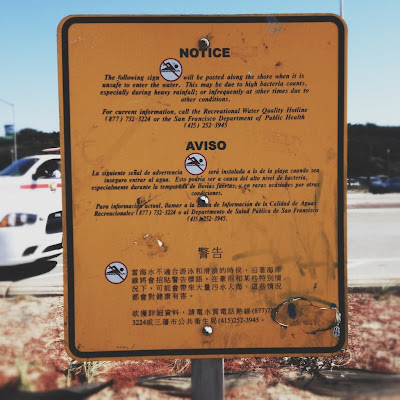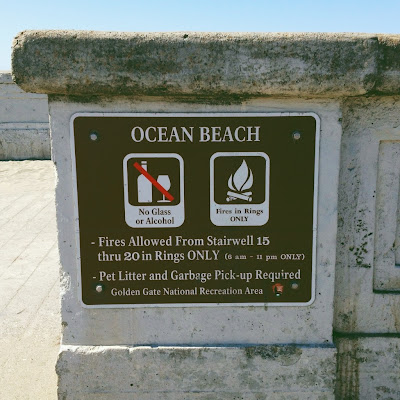Eva Dunn
Professor Stacy Asher
Art 195
October 28, 2012
Diverse, Yet United
Most of the hustle and bustle that
goes on in the great city of San Francisco takes place in what is known as
Union Square, located along Market Street in the Downtown district. The Union Square area holds something for
everyone: BART, food, retail shopping, tourist shops, public buildings, and
even museums. When touring Union Square and the surrounding area with my
signage class, I noticed the drastic differences between the signs of Union
Square versus the signs of the fringe of the Tenderloin. It is absolutely
incredible the diversity that one can see in the various signs of San
Francisco, especially in Union Square and the surrounding area.
During my class excursion in Union
Square, I noticed that many of the signs in that area were representing retail
stores and, in turn, consumerism. Basically,
Union Square is just a large representation of capitalism at it’s finest.
Capitalism seems to make America go ‘round, where competition between
businesses fuel the norm of everyday life.
Directly in Union Square, the signs range from high-end retail stores to
hole-in-the-wall low-budget stores to souvenir shops—however, each sign caters
to an audience with the intention of spending money. Although the signs’ intended audience ranges
widely, many signs, especially in and around Westfield Mall, are intended for
people who are from the middle to upper class.
I suppose this makes sense in the marketing field—their aim is to make
signs that grab the attention of the people who can afford the product. The signs in the mall and around Union Square
seemed to be more high-budget, as well—meaning the signs and advertisements
cost a lot of money. Take this sign, for
example:
One can walk from Union Square to the fringe of the Tenderloin in just a few blocks. With each passing step, the environment changes drastically—it goes from high-end shops to more affordable stores. The people change, as well. Once I turned the corner and walked down Mission Street, I could see a higher density of homeless people, many of whom seemed to be addicted to hard drugs. When looking at signs in a place like this, I realized that the motives behind the signs’ messages are different than those in Union Square. For example, I saw a sign in the window about a syringe access service (pictured below), which aimed to prevent HIV. Although many signs on the fringe of the Tenderloin did aim to sell a product, it was obvious to me that the intended audience was drastically different. I saw signs advertising stores which sold porn movies and other sexual things, cheap haircuts, and low-budget eateries. The cost of the signs was obviously less than the cost of many signs in Union Square. Because of the messages of the signs and their poor quality, I inferred that these signs were intended for the people I saw on the streets: homeless or otherwise financially struggling. It is incredible how an environment can change so drastically in such a short distance.
While the different areas around
Union Square hold different kinds of signage, there is a type of signage that
is universally for all types of people: transportation and other public
signage. When visiting the BART station
in Union Square, I noticed that the signs were merely informational. They did not try and sell a product to people
and they did not have any particular intended audience. The sole purpose of these signs was to direct
and inform. And I find it amazing that
something as simple as the BART could represent unity in such a diverse city. Other public places held the same theme of
unity, such as the public library.
Everyone is welcome in the public library, so the signs within aim to
promote knowledge, something that anyone in the city of San Francisco can
attain though reading and researching at the free library. This is such a
beautiful concept: that anybody is welcome in the library or on the BART as
long as they respect the sanctity of the building or system.
Finally, I want to discuss something that I found very interesting. The light posts in the area we were at actually depicted stories of San Francisco’s past. Almost like the pictures one would see on an Egyptian urn. So, while I was strolling along a new street with new signs and new products, I could actually get a glimpse of San Francisco’s past, as well. I love the idea of picturing Union Square in the early 1900s, or even earlier. These light posts help to strengthen that picture in my mind. Below is an example of one of the light posts I saw while walking:
Finally, I want to discuss something that I found very interesting. The light posts in the area we were at actually depicted stories of San Francisco’s past. Almost like the pictures one would see on an Egyptian urn. So, while I was strolling along a new street with new signs and new products, I could actually get a glimpse of San Francisco’s past, as well. I love the idea of picturing Union Square in the early 1900s, or even earlier. These light posts help to strengthen that picture in my mind. Below is an example of one of the light posts I saw while walking:
Overall, the trip to Union Square/BART/the fringe of the Tenderloin was very enlightening. I got to see the drastic changes between a high-end marketplace and a more low-budget area. I also found it interesting that the people of San Francisco could be united through the transportation system and the public library, among other public areas. I also look forward to noticing more signs from different eras, such as the light posts.
(more pictures to come)
.JPG)
.JPG)
.JPG)












